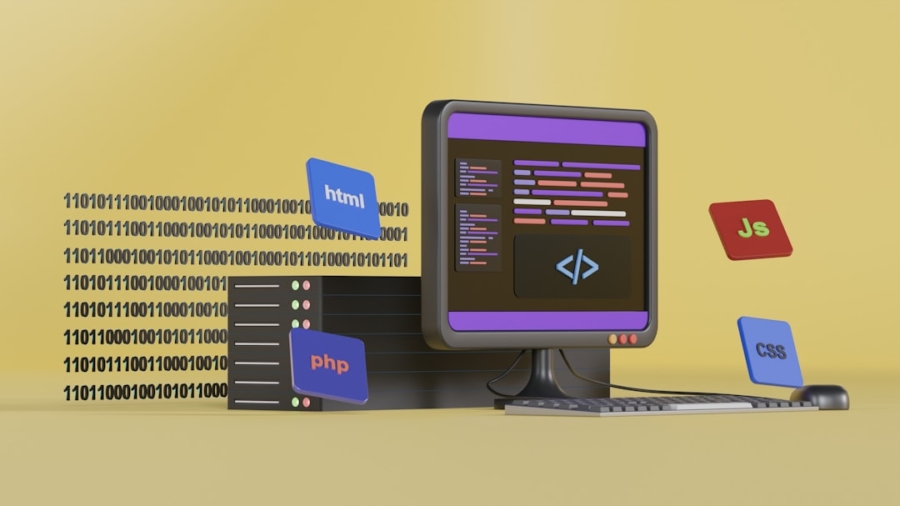Open-source platforms have emerged as transformative tools in the educational landscape, offering innovative solutions that challenge traditional teaching and learning methodologies. These platforms, characterized by their publicly accessible source code, allow educators, students, and developers to collaborate, modify, and enhance educational resources. The rise of open-source software in education is not merely a technological shift; it represents a philosophical change towards inclusivity, collaboration, and democratization of knowledge.
As educational institutions grapple with the demands of a rapidly evolving digital world, open-source platforms provide a flexible framework that can adapt to diverse learning environments and needs. The significance of open-source platforms in education extends beyond mere accessibility. They foster a culture of sharing and collaboration among educators and learners, breaking down barriers that often hinder the dissemination of knowledge.
For instance, platforms like Moodle and Sakai have gained traction in various educational settings, enabling institutions to create customized learning experiences tailored to their specific contexts. This adaptability is crucial in an era where one-size-fits-all solutions often fall short of meeting the diverse needs of students. By leveraging open-source technologies, educators can create rich, interactive learning environments that promote engagement and critical thinking.
Key Takeaways
- Open-source platforms in education provide free and accessible tools for teaching and learning, promoting collaboration and innovation.
- Advantages of open-source platforms include cost-effectiveness, flexibility, and community support, while challenges include security concerns and technical expertise.
- Case studies from global education systems demonstrate successful implementation of open-source platforms, such as Moodle and Open edX, to enhance learning outcomes.
- Open-source platforms have a significant impact on teaching and learning by enabling personalized and interactive learning experiences for students and educators.
- Strategies for implementing open-source platforms in education involve training and support for educators, integration with existing systems, and fostering a culture of sharing and collaboration.
Advantages and Challenges of Open-Source Platforms
The advantages of open-source platforms in education are manifold. One of the most significant benefits is cost-effectiveness. Many open-source solutions are available for free or at a fraction of the cost of proprietary software, making them accessible to institutions with limited budgets.
This financial flexibility allows schools and universities to allocate resources toward other critical areas, such as hiring qualified educators or investing in infrastructure. Furthermore, the collaborative nature of open-source development means that institutions can benefit from continuous improvements and updates made by a global community of developers and educators.
One major hurdle is the need for technical expertise. While many open-source platforms are user-friendly, they often require a certain level of technical knowledge to install, customize, and maintain. This can be particularly daunting for smaller institutions that may lack dedicated IT staff.
Additionally, the reliance on community support for troubleshooting and updates can lead to inconsistencies in user experience and functionality. Institutions must weigh these challenges against the potential benefits when considering the implementation of open-source solutions.
Case Studies of Open-Source Platforms in Global Education Systems

Examining specific case studies can provide valuable insights into how open-source platforms are being utilized across different educational contexts. One notable example is the use of Moodle in various universities worldwide. In Australia, the University of Queensland has successfully implemented Moodle as its primary learning management system (LMS).
The platform has enabled faculty to create engaging online courses that incorporate multimedia resources, quizzes, and forums for discussion. This approach has not only enhanced student engagement but has also facilitated a more personalized learning experience, allowing students to progress at their own pace. Another compelling case study is the use of Sakai at several institutions in the United States, including the University of Michigan.
Sakai’s collaborative features have been particularly beneficial for research-oriented courses where students work together on projects. The platform allows for seamless sharing of resources and communication among peers and instructors, fostering a sense of community within the classroom. Additionally, Sakai’s open-source nature has encouraged faculty members to contribute to its development, ensuring that the platform evolves in response to the needs of its users.
Impact of Open-Source Platforms on Teaching and Learning
The impact of open-source platforms on teaching and learning is profound and multifaceted. These platforms empower educators to innovate their teaching practices by providing tools that facilitate active learning and collaboration. For instance, educators can easily integrate multimedia content into their lessons, creating dynamic learning experiences that cater to various learning styles.
The ability to customize course materials also allows teachers to align their content with specific curricular goals or student interests, enhancing relevance and engagement. Moreover, open-source platforms promote a culture of lifelong learning among students. By utilizing tools that encourage exploration and experimentation, students develop critical skills such as problem-solving and adaptability.
For example, platforms like GitHub not only serve as repositories for code but also as collaborative spaces where students can engage in peer review and contribute to real-world projects. This hands-on experience is invaluable in preparing students for future careers in an increasingly digital world.
Strategies for Implementing Open-Source Platforms in Education
Implementing open-source platforms in educational settings requires careful planning and strategic execution. One effective strategy is to conduct a needs assessment to identify the specific requirements of the institution and its stakeholders. This assessment should involve input from educators, students, and IT staff to ensure that the chosen platform aligns with pedagogical goals and technical capabilities.
By understanding the unique context of the institution, decision-makers can select an open-source solution that best meets their needs. Training and professional development are also critical components of successful implementation. Educators must be equipped with the skills necessary to effectively utilize open-source platforms in their teaching practices.
Institutions can offer workshops, online courses, or peer mentoring programs to support faculty in this transition. Additionally, fostering a community of practice among educators can encourage collaboration and sharing of best practices, further enhancing the overall effectiveness of open-source tools in the classroom.
Open-Source Platforms and Access to Education

One of the most compelling arguments for the adoption of open-source platforms in education is their potential to enhance access to quality learning resources.
Open-source solutions provide an alternative that allows institutions to leverage technology without incurring significant costs.
This democratization of educational resources is crucial for promoting equity in education. Furthermore, open-source platforms can facilitate remote learning opportunities for students who may not have access to traditional educational settings. During the COVID-19 pandemic, many institutions turned to open-source tools like BigBlueButton for virtual classrooms, enabling educators to continue teaching despite physical distancing measures.
This adaptability highlights how open-source platforms can bridge gaps in access and ensure continuity in education during challenging times.
Future Trends and Developments in Open-Source Platforms for Education
As technology continues to evolve, so too will the landscape of open-source platforms in education. One emerging trend is the integration of artificial intelligence (AI) into open-source educational tools. AI has the potential to personalize learning experiences by analyzing student data and providing tailored recommendations for resources or activities.
For instance, platforms like Open edX are exploring AI-driven features that can adapt course content based on individual learner progress. Another significant development is the growing emphasis on interoperability among educational technologies. As institutions adopt multiple tools and platforms, ensuring seamless integration becomes essential for maximizing their effectiveness.
Open-source solutions are well-positioned to lead this charge due to their collaborative nature and commitment to standards-based development. By prioritizing interoperability, educational institutions can create cohesive ecosystems that enhance teaching and learning experiences.
The Role of Open-Source Platforms in Shaping Global Education Systems
Open-source platforms are poised to play a pivotal role in shaping the future of global education systems. Their inherent flexibility, cost-effectiveness, and collaborative potential make them ideal solutions for addressing the diverse challenges faced by educators and learners alike. As institutions increasingly recognize the value of these platforms, they will likely become integral components of educational strategies worldwide.
The ongoing evolution of technology will further enhance the capabilities of open-source platforms, enabling them to meet the changing needs of learners in an increasingly digital world. By embracing these tools, educational institutions can foster environments that promote innovation, collaboration, and equitable access to quality education for all students, regardless of their geographical or socio-economic circumstances.
In the realm of global education systems, the exploration of open-source platforms is a pivotal topic that aligns with the broader technological advancements discussed in various articles. A related article that delves into the technological landscape is Hacker Noon Covers a Range of Topics Across the Tech Sector. This article provides insights into the diverse technological innovations that are shaping different sectors, including education. By understanding the broader tech trends, educators and policymakers can better integrate open-source platforms into educational frameworks, ensuring that they are leveraging the most effective tools available to enhance learning experiences globally.
FAQs
What are open-source platforms in global education systems?
Open-source platforms in global education systems are software or tools that are freely available for use, modification, and distribution by anyone. These platforms are often developed collaboratively and are designed to support teaching, learning, and administrative functions within educational institutions.
What are the benefits of using open-source platforms in education?
Using open-source platforms in education can provide several benefits, including cost savings, flexibility, and the ability to customize and adapt the software to meet specific educational needs. Additionally, open-source platforms often foster collaboration and innovation within educational communities.
What are some examples of open-source platforms used in global education systems?
Some examples of open-source platforms used in global education systems include Moodle, an open-source learning management system; Open edX, an open-source platform for creating and delivering online courses; and Koha, an open-source integrated library system.
How are open-source platforms impacting global education systems?
Open-source platforms are impacting global education systems by providing affordable and accessible tools for teaching, learning, and administrative tasks. These platforms are also fostering a culture of collaboration and knowledge sharing within educational communities, leading to innovation and improvement in educational practices.

